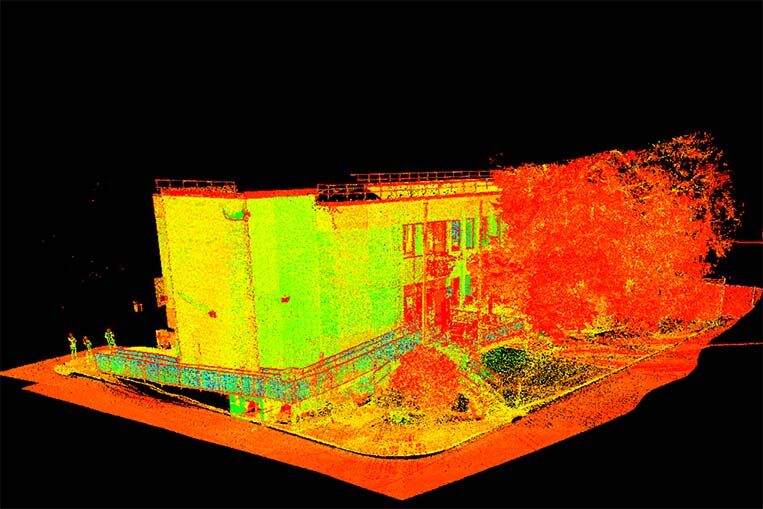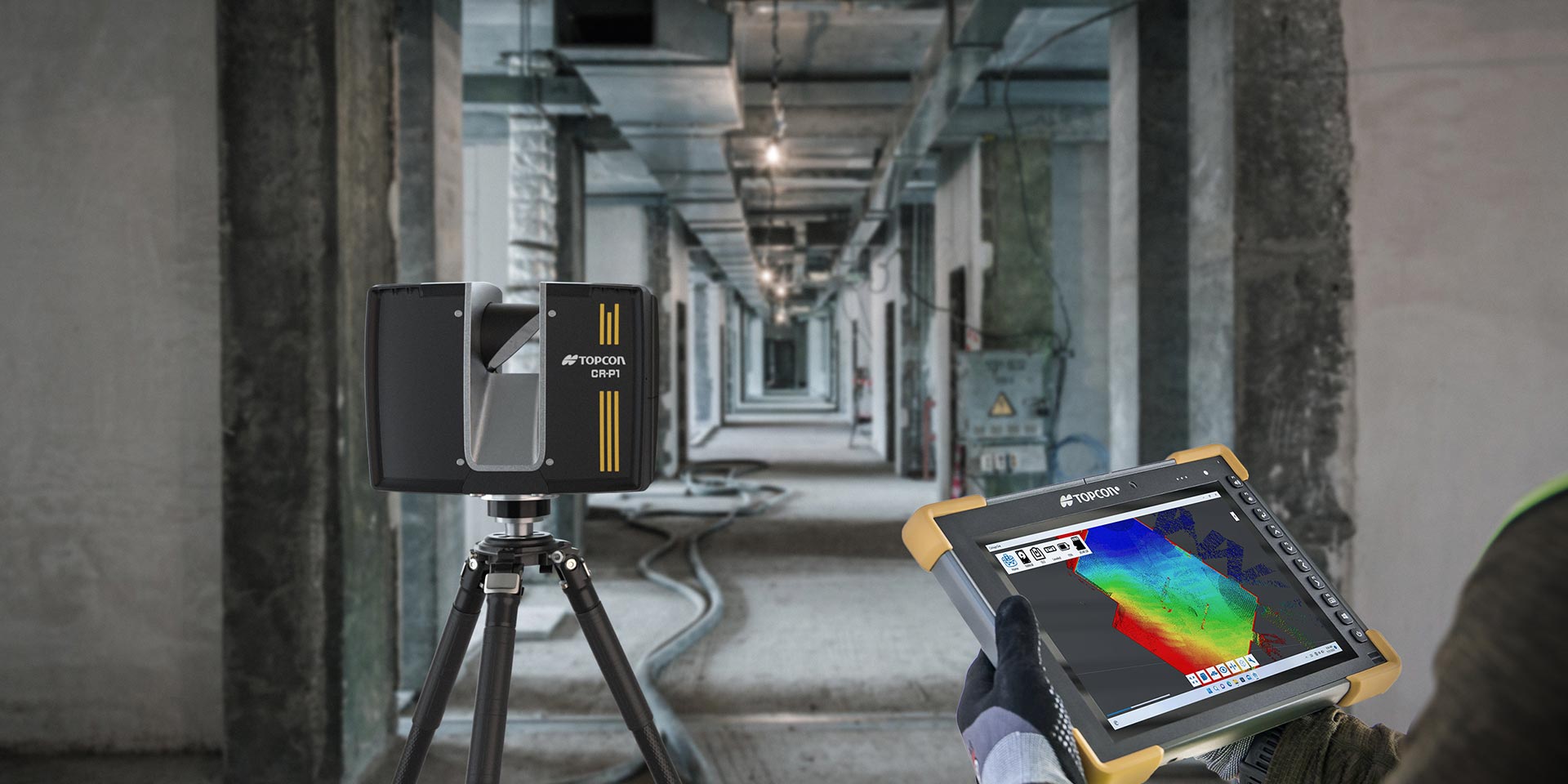The Future of Precision Dimension: Recognizing the Role of 3D Laser Scanning Innovation
The landscape of precision dimension is progressing with the advent of 3D laser scanning modern technology. This innovation guarantees enhanced precision and performance throughout various fields. As industries start to embrace these innovations, the ramifications for project administration and execution end up being progressively considerable. Nonetheless, the transformative impacts of this modern technology extend past plain numbers and measurements, meaning a more comprehensive shift in exactly how specialists approach their work. What might this suggest for the future?
What Is 3D Laser Scanning Innovation?
3D laser scanning technology is a sophisticated technique used to catch exact three-dimensional dimensions of physical objects and atmospheres. This innovation utilizes laser light beams to gather information factors, which are then refined to develop comprehensive electronic depictions of the scanned topics. By giving off hundreds of laser pulses per secondly, 3D laser scanners can accurately videotape the shape, size, and spatial partnerships of different surface areas.
The procedure typically entails positioning the scanner at various viewpoint to record substantial data. The resulting factor cloud, a collection of countless data points, can be assessed and exchanged 3D models. Applications of this innovation span multiple fields, consisting of style, heritage, and engineering preservation, where it aids in paperwork and analysis. As a non-intrusive approach, 3D laser scanning minimizes disturbance to the atmosphere, enabling for detailed evaluations of both existing structures and natural landscapes, thereby boosting understanding and facilitating educated decision-making.
Trick Benefits of 3D Laser Scanning in Different Industries
3D laser scanning innovation supplies considerable advantages across numerous markets by supplying enhanced precision and precision in dimensions. This innovation not just simplifies process yet likewise causes substantial time and expense financial savings. As companies significantly embrace this innovative strategy, the benefits end up being evident in enhanced task results and performances.
Enhanced Accuracy and Precision
The assimilation of laser scanning technology has transformed the means markets come close to measurement and information collection. This innovation offers an unprecedented level of precision, capturing numerous data points in a solitary check. Because of this, experts across numerous fields, such as design, production, and design, can produce highly described 3D designs that mirror real-world conditions. Enhanced precision reduces errors associated with traditional dimension techniques, guaranteeing that buildings and layouts are based on accurate data. In addition, the capability to catch elaborate details permits better analysis and decision-making, inevitably resulting in enhanced results. By leveraging 3D laser scanning, industries can achieve greater requirements of high quality, making it a vital device for exact dimensions.
Time and Expense Performance
Efficiency in time and price is a considerable advantage supplied by laser scanning modern technology, transforming project implementation across various sectors. By quickly capturing detailed 3D information, laser scanning reduces the time invested in hands-on measurements and reduces the threat of errors. This quick data purchase helps with quicker decision-making and job timelines, allowing groups to assign sources extra properly. Furthermore, the innovation decreases the demand for rework, as exact designs bring about far better planning and execution. Industries such as construction, design, and making advantage considerably, seeing lower expenses connected to labor and materials. Generally, 3D laser scanning not just boosts operational efficiency however additionally contributes to considerable financial savings, making it an indispensable tool in today's affordable landscape.
Applications of 3D Laser Scanning in Design and Construction
As architectural and construction projects expand significantly intricate, the fostering of laser scanning innovation has actually arised as a transformative option. This innovation uses exact measurements and comprehensive 3D representations of existing structures, helping with even more exact planning and design procedures. Designers use 3D laser scanning to create electronic versions that catch intricate information, making certain that restorations and new constructions align flawlessly with existing problems.

The Function of 3D Laser Scanning in Manufacturing Processes
3D laser scanning plays a crucial function in making processes by boosting high quality control via continue reading this accurate dimensions and data collection. This modern technology allows makers to identify disparities early, reducing mistakes and waste. In addition, it simplifies production operations by assisting in better communication and control among teams.
Improved Quality Assurance
Quality control in making procedures has been reinvented by the combination of laser scanning modern technology. This innovative strategy enables exact measurements and in-depth inspections of components, making sure that they fulfill rigorous quality standards. 3D laser scanning catches complex geometries and resistances, making it possible for suppliers to spot variances from layout requirements swiftly. This technology significantly decreases human error related to standard dimension techniques, supplying regular and trusted data. By facilitating real-time quality control, it enables positive adjustments in the manufacturing process, ultimately leading to improved item integrity and customer satisfaction. As industries significantly take on 3D laser scanning, the capacity for enhanced top quality control ends up being obvious, noting a transformative change in manufacturing techniques.
Structured Production Workflow
Reliable production workflows are increasingly gaining from the combination of laser scanning technology in making procedures. This innovation allows for quick, precise measurements of settings up and components, considerably lowering the time required for setup and modifications. By recording specific geometry, manufacturers can quickly identify inconsistencies between style specifications and actual items, enabling prompt corrective activities. On top of that, 3D laser scanning facilitates the smooth transfer of information between style and manufacturing teams, improving cooperation and decreasing mistakes. The modern technology likewise sustains electronic twin development, enabling real-time monitoring and optimization of producing procedures. Because of this, organizations can accomplish greater efficiency, decreased waste, and boosted overall productivity, inevitably driving affordable advantage in the market.
Maintaining Heritage: Exactly How 3D Laser Scanning Aids Cultural Preservation
As cultural heritage websites face the risk of damage and damage, innovative modern technologies such as laser scanning become crucial tools for conservation efforts. 3D laser scanning catches detailed details of historic frameworks and artefacts with remarkable precision, creating electronic versions that offer numerous purposes in conservation. These models enable for precise documents of existing problems, making it possible for professionals to keep an eye on adjustments with time and analyze deterioration threats.
In addition, laser scanning assists in online remediation, helping conservators develop strategies for repair services or recreating lost aspects without intrusive methods. The modern technology likewise aids in enlightening the public, providing immersive experiences through digital trips that highlight the significance of these websites. By integrating 3D laser scanning into social conservation practices, stakeholders can assure that heritage is protected for future generations while enhancing understanding and appreciation of historic contexts.
The Future Overview: Developments and Trends in 3D Laser Scanning Modern Technology
Though 3D laser scanning modern technology has currently changed different markets, its future guarantees even greater developments that will enhance speed, availability, and accuracy. Arising patterns suggest a boost in integration with synthetic knowledge and equipment learning, resulting in smarter data go to my site processing and analysis abilities. This harmony will certainly make it possible for quicker decision-making and even more specific end results in areas such as design, building and construction, and heritage preservation.
Advancements in hardware are anticipated to yield lighter, much more portable scanning devices, equalizing access for smaller companies and specific specialists. As software remains to develop, straightforward applications will certainly simplify intricate process, making 3D scanning more easily accessible to non-experts
The surge of cloud-based solutions will promote real-time collaboration and information sharing amongst stakeholders, leading the way for streamlined task administration. Jointly, these recommended you read patterns indicate a future where 3D laser scanning innovation becomes a necessary tool in an also broader spectrum of applications.
Regularly Asked Concerns
Just How Much Does 3D Laser Scanning Innovation Price?

What Are the Skills Required to Run 3D Laser Scanners?
Operating 3D laser scanners calls for technical effectiveness, interest to detail, spatial recognition, understanding of software program for data handling, and an understanding of surveying concepts. Additionally, solid analytical skills and analytic capabilities are crucial for effective procedure.
Can 3D Laser Scanning Incorporate With Other Technologies?
Yes, 3D laser scanning can integrate perfectly with various other innovations, such as Geographic Details Systems (GIS), Building Details Modeling (BIM), and augmented truth, boosting data accuracy and promoting improved analysis across different sectors and applications. - 3D Scanning
What Is the Common Scanning Variety of These Instruments?
The typical scanning variety of 3D laser scanning tools varies extensively, normally between 50 meters to over 1,000 meters, depending on the model and application, influencing their suitability for different precision measurement jobs and settings.
How much time Does a 3D Laser Scanning Project Take?
A 3D laser scanning project usually takes anywhere from a couple of hours to a number of days, depending on factors such as project size, complexity, and required information. Each task's timeline can differ substantially based upon these aspects.
The landscape of precision measurement is developing with the introduction of 3D laser scanning technology. 3D laser scanning technology is a sophisticated method used to capture specific three-dimensional dimensions of physical items and settings. 3D laser scanning modern technology supplies considerable advantages across numerous markets by offering enhanced precision and precision in measurements. 3D laser scanning technology has actually already transformed numerous markets, its future guarantees even better improvements that will enhance accuracy, accessibility, and rate. 3D laser scanning modern technology normally costs in between $10,000 and $100,000, depending on the equipment's abilities and features.